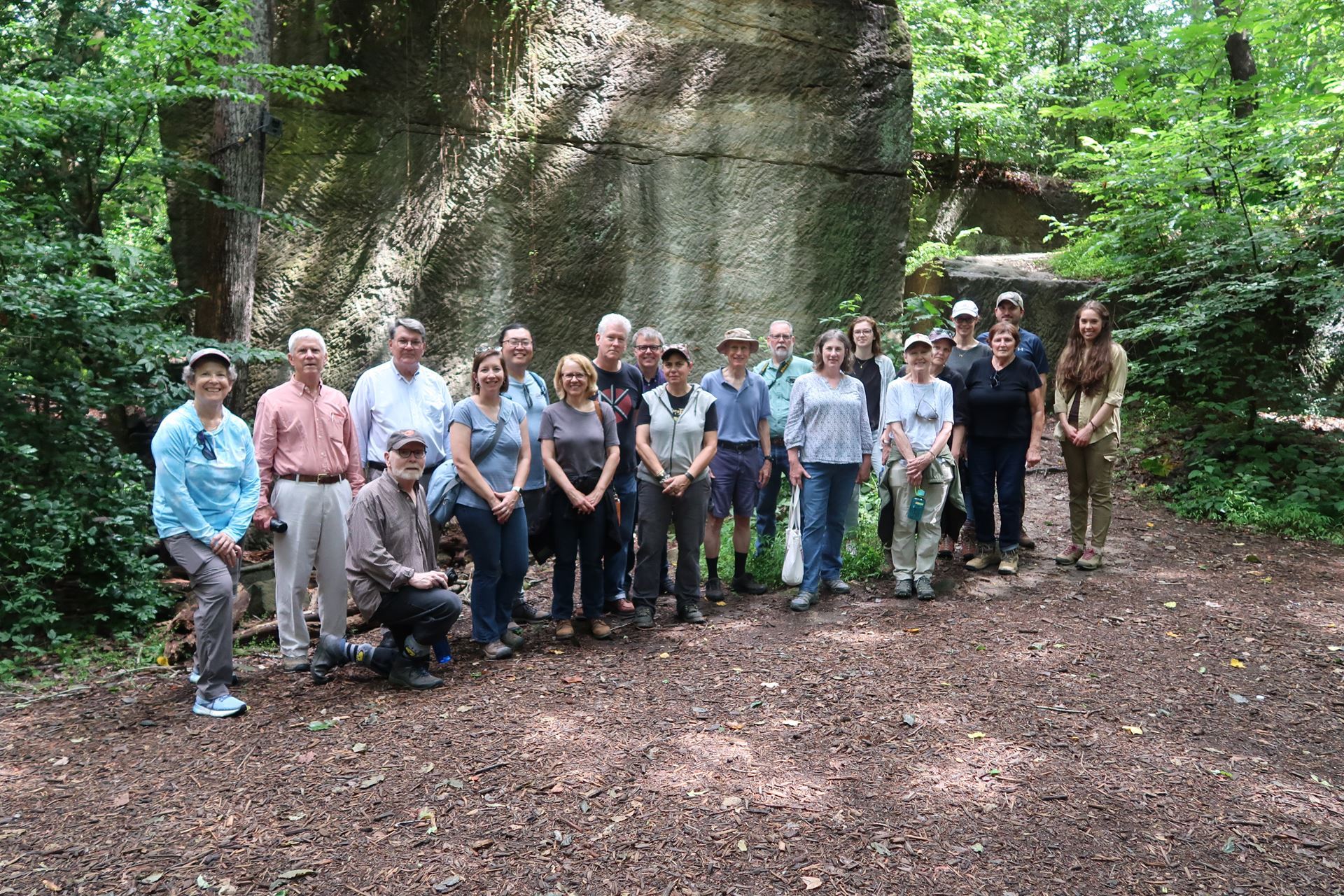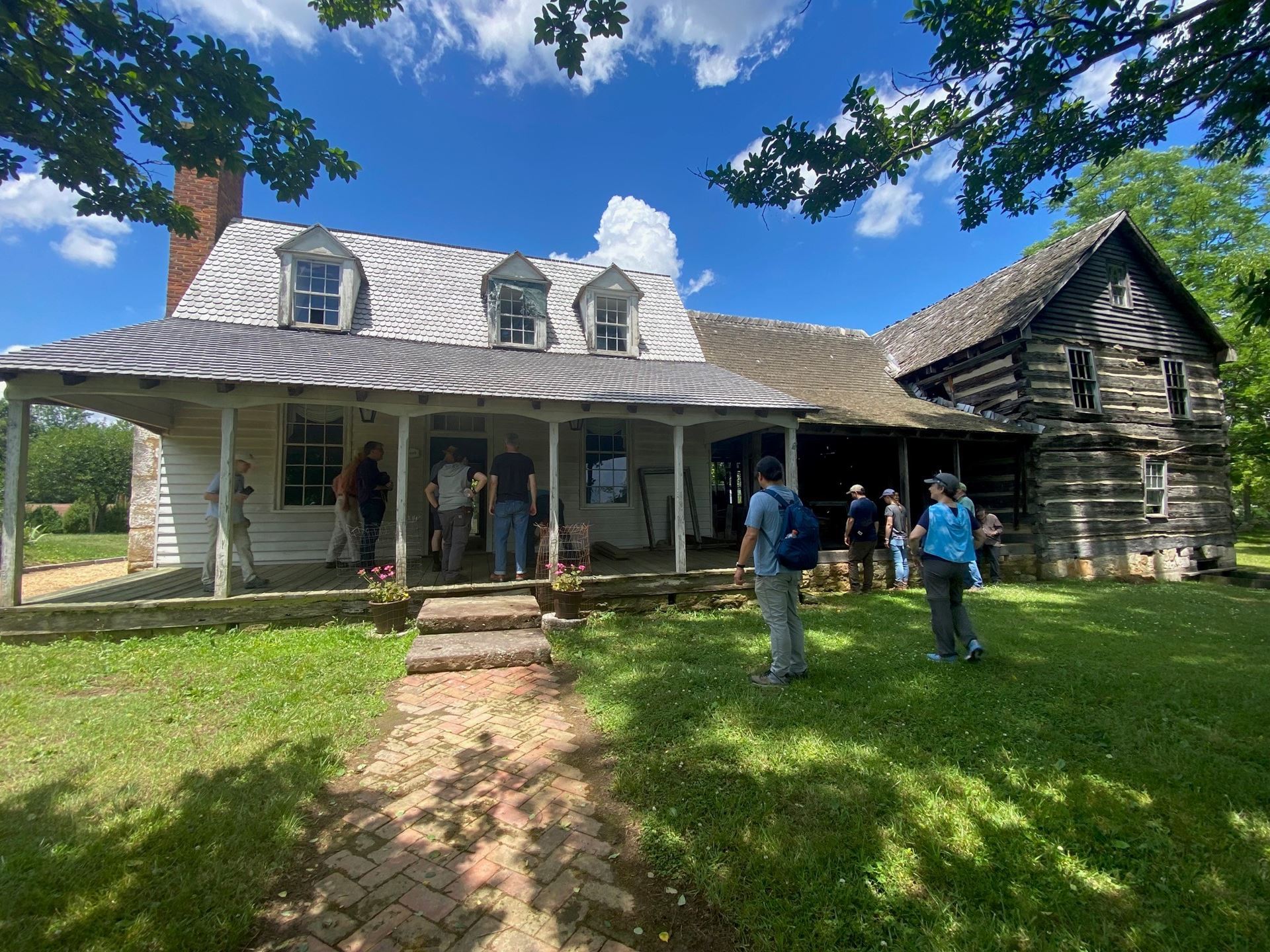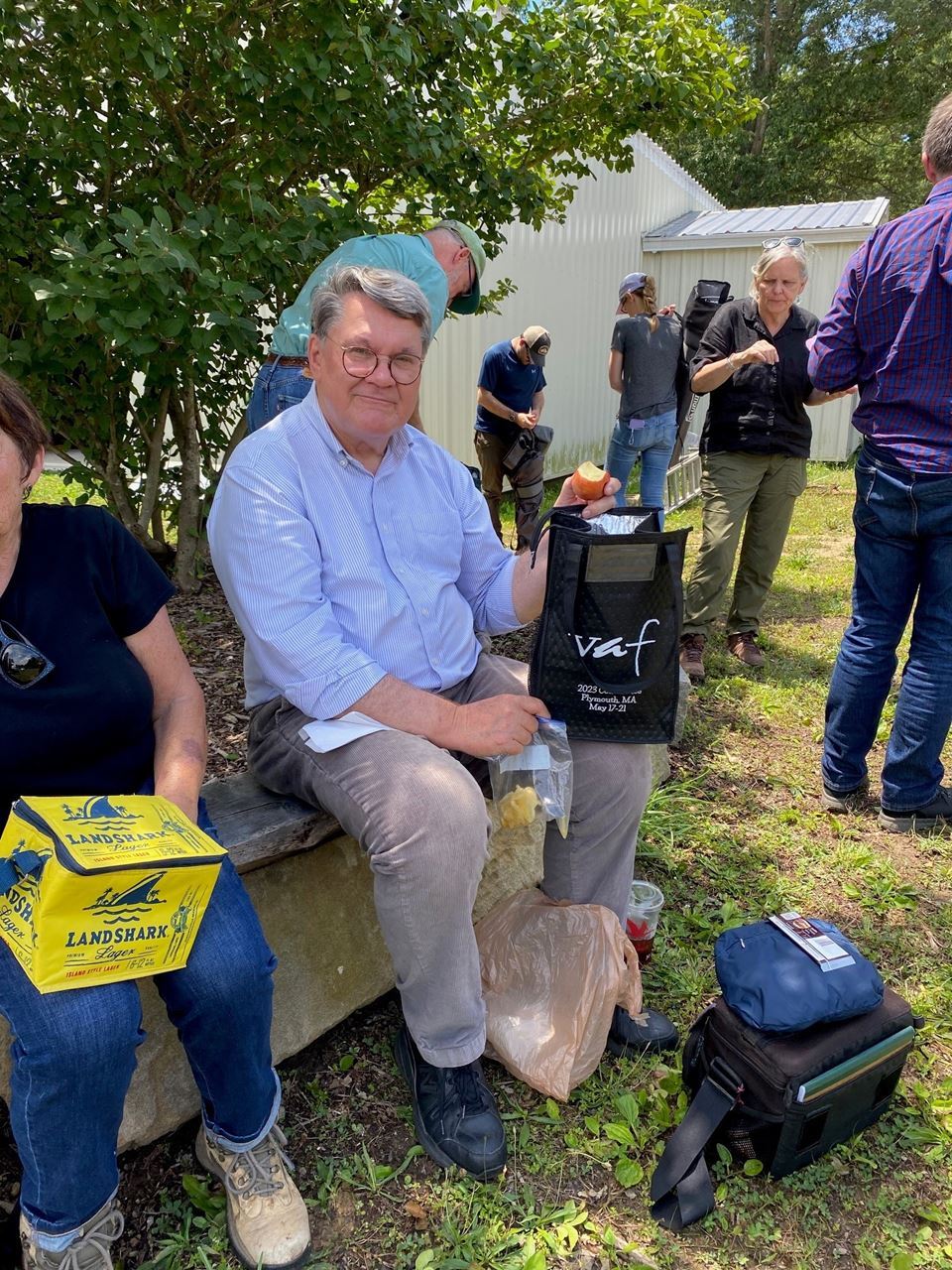On June 24, the Chesapeake VAFer received a tour of the former Aquia Quarries that supplied the stone for both the White House and the US Capitol and a number of historic buildings where Aquia stone was utilized in its construction. The tour was provided by Jerrilynn and Rick MacGregor, respectively the historian and former president of the Stafford County Historical Society and experts on the topic. Aquia freestone may well be the definitive element in this region’s vernacular architecture. It is believed to have been used architecturally from at least the 1660s to the 1970s and it is found in a variety of structures spread over a wide geographical area. Freestone was easily quarried and worked by nearly anyone who possessed even the most rudimentary agricultural tools; thus, it quickly became popular for foundations, chimneys, steps, and gravestones.

Chesapeake Chapter at Aquia Quarries (photo submitted)
From there, the group went to the nearby Concord, a second quarter of the eighteenth-century hall-parlor house that has been in the MacGregor family since the 1850s. Concord is located in the heart of Stafford’s eighteenth-century industrial area, close to Accokeek Iron Furnace. The tract included at least five quarry pits and three landings on Aquia Creek where stone was picked up by scows or ships. These pits likely provided the stone used to construct the chimneys on the house.

Chesapeake Chapter at Concord (photo submitted)
Next was the Robertson-Towson house, a ca. 1815 ruin built of Aquia freestone. The house is one of but a few buildings in Stafford that was constructed of blocks of freestone as opposed to stone rubble. The building was of a simple side-passage design with a hall and one room on each floor, and remained in the Towson family until at least 1999, though it was abandoned in the mid-twentieth century.

The final stop was the Aquia Church, an impressive and well-preserved 1750s brick structure with Aquia stone embellishments. Construction of this magnificent building commenced in 1751 and was completed in 1757. William Copein (1730-1805) was the master mason of this two-story, open span Cruciform design building, laid up with brick and trimmed with finely worked Aquia freestone. It is considered one of finest colonial-era buildings in the United States.
Carl Lounsberry with a VAF Tote on Aquia Tour (photo submitted)